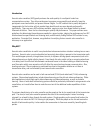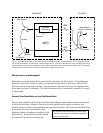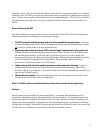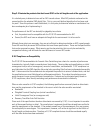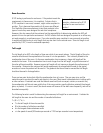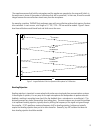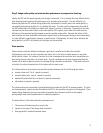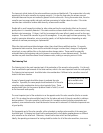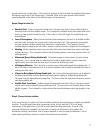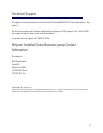Step 3: Judge audio quality and state machine performance by comparative listening.
Ideally, the AEC will let speech signals pass through it unharmed. This is actually the most difficult task in
both designing and measuring the performance of an acoustic echo canceller. The real difficulty is in
determining how the AEC sounds during double-talk, and whether it actually harms the sound quality by
inaccurately determining whether it is in a double-talk state. The state machine determines the mode of
the AEC and decides if it should be in double-talk, transmit, receive, or idle mode. The quality of the state
machine has the most drastic effect on the audio quality of the system, and is what will make the most
difference in the perceived quality between one echo canceller and another. Because the effects of the
state machine are most noticeable with dynamic signals (such as those present during a real conversation),
it is very difficult to quantitatively measure its performance. Consequently, the best way to evaluate the
audio quality of an AEC is by listening to it during a real conversation.
State machine
State machines make the difference between a good echo canceller and a bad echo canceller.
Unfortunately, most tests on echo cancellers are static: that is, the echo canceller remains in one state
while the test is done. For instance, the tests for initial convergence time and total echo cancellation are
done while the echo canceller is in receive mode. A great convergence rate does not guarantee that the
system will be able to determine when to converge during a dynamic conversation. If the state machine is
not robust, the other characteristics of the system will not mean much.
The state machine in an acoustic echo canceller chooses between one of the following four states:
• receive (where only “far in” speech is present)
• transmit (where only “near in” speech is present)
• double-talk (where both far-in and near-in speech are present)
• idle (where no speech is present)
The state machine must accurately choose between these modes for the AEC to operate properly. If it does
not choose properly, speech may be distorted by the AEC or the canceller may go out of convergence. Since
modes change frequently during conversations (especially when there are more than two people
participating), state machine performance is extremely important.
The basic factors of the state machine’s performance are
1. The accuracy of determining the correct state
2. Impact on the signal if the wrong state is selected
3. How gracefully it switches between states.
9




